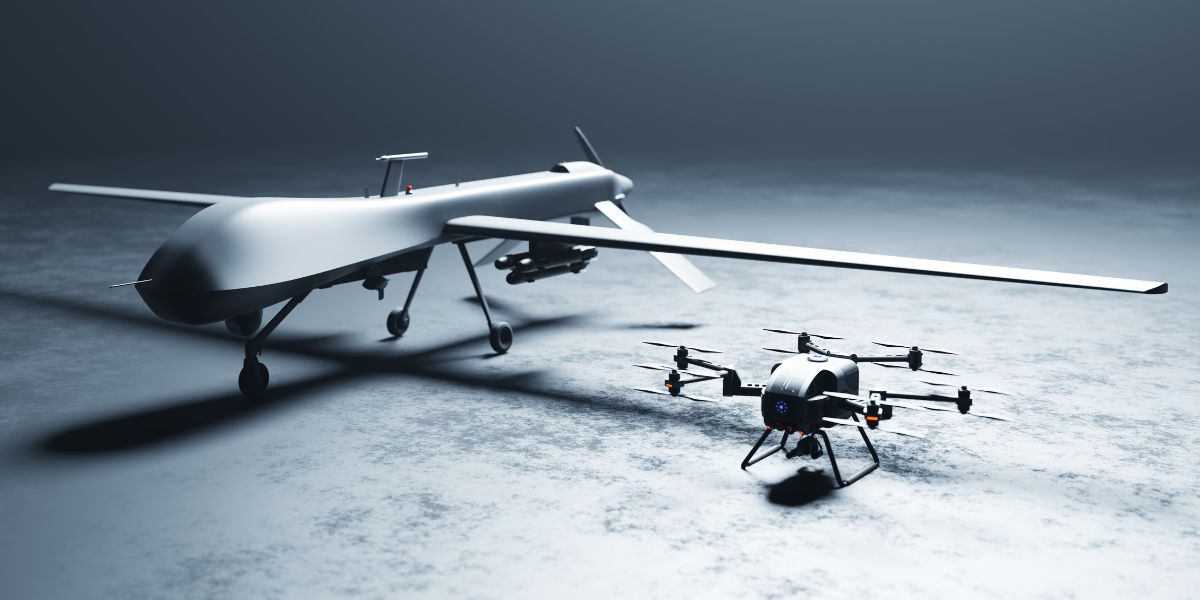Table of Contents
Drone technology is continuously evolving, and it won’t be surprising to groundbreaking progressive improvement in the future. Drone manufacturers and software developers have joined hands to unleash new possibilities, and it can be hard to keep up with new drone tech entering the market constantly.
To give you a better idea of where we stand in the advancement of this technology and what the future holds, below is a breakdown by generation:
Generation 1: Basic remote-control aircraft.
Generation 2: The drone has a static design with a fixed camera mount. It is capable of video recording and taking still photos. Moreover, the drone also has manual piloting control.
Generation 3: Again, static design, but this time, the drone has been equipped with 2 axis gimbals, HD video recording, basic safety modes, and assisted piloting.
Generation 4: The drone design becomes transformative with 3 axis gimbals and now supports 1080p video recording paired. The drones have improved safety modes and autopilot mode.
Generation 5: Newly improved transformative designs are released with the addition of a 360° gimbal, 4K video support, as well as intelligent flight modes.
Generation 6: The drones have become commercially suitable. They come with safety and regulatory standards-based design. In addition, they feature platform and payload adaptability, automated safety modes, and are aware of the airspace.
Generation 7: The drones are now widely accepted commercially. They feature platform and payload interchangeability, automated safety modes, and enhanced intelligent piloting models. They are fully aware of the airspace and can act automatically, such as takeoff, land, and mission execution.
We currently sit between the fifth and sixth generations in terms of technology, while some higher-end professional drones have started to cross into the next generation.
The next generation of drones is already underway, as 3DRobotics announced the first-ever all-in-one smart drone named Solo[i]. Smart drones equipped with smart, accurate sensors, built-in safety features, and self-monitoring are the next big revolution in the world of UAVs.
These technological advancements will undoubtedly provide new opportunities to several fields, including military, logistics, transport, and commercial.
As drone technology evolves and grows, drones will become more dependable, reliable, and safe. Summarizing all the points and looking at the future drone generations, we can say that in the future, we can expect to see:
- Much better drone batteries.
- More advanced cameras aren’t used for photography or videography. They will be used for orientation, navigation, and recognition of obstacles to make the flying experience better for the pilot.
- Drones will be powered through intelligent software and hardware that will enable them to analyze their surroundings.
- Onboard sense-and-avoid systems paired with highly accurate sensors to detect obstacles.
According to the Economic Report by the Association for Unmanned Vehicle Systems International (AUVSI), in the first three years of UAS integration, more than 70,000 jobs will be created in the USA alone. This increase will create an economic impact of more than $13.6 billion and grow through 2025, where they see the creation of 100,000 jobs in the USA. Hence, it is found that the drone industry will add more than $82 billion to the US economy by 2025[ii].
[i] Casey Newton (April 13, 2015), The 3D Robotics Solo may be the smartest drone ever. Retrieved from https://www.theverge.com/2015/4/13/8394359/3d-robotics-solo-drone-quadcopter-gopro
[ii] ECONOMIC REPORT. Retrieved from https://www.auvsi.org/our-impact/economic-report
